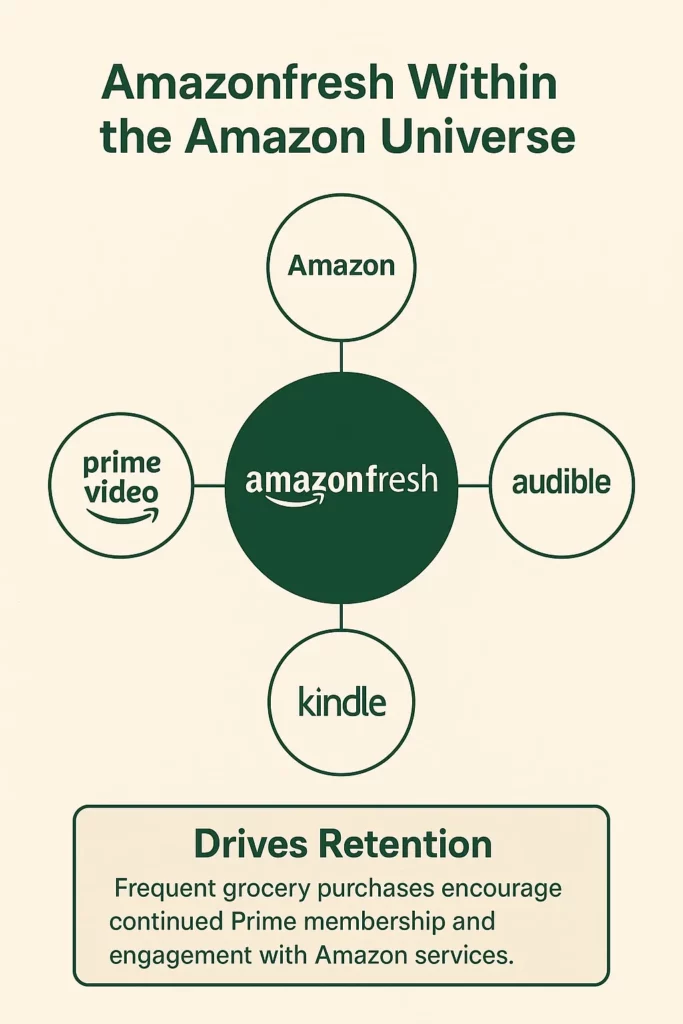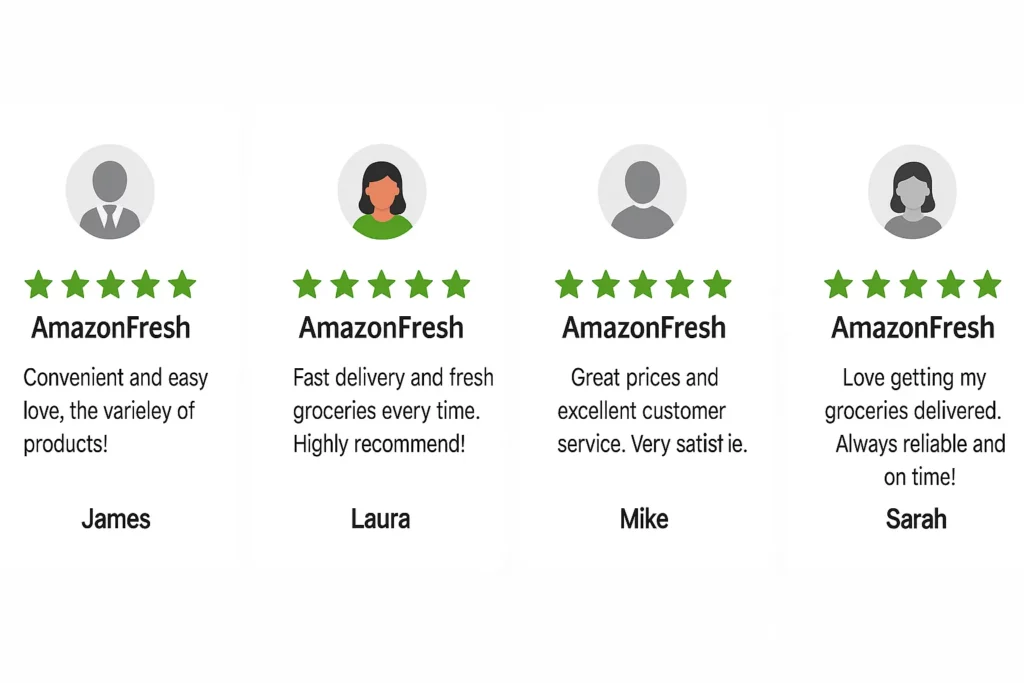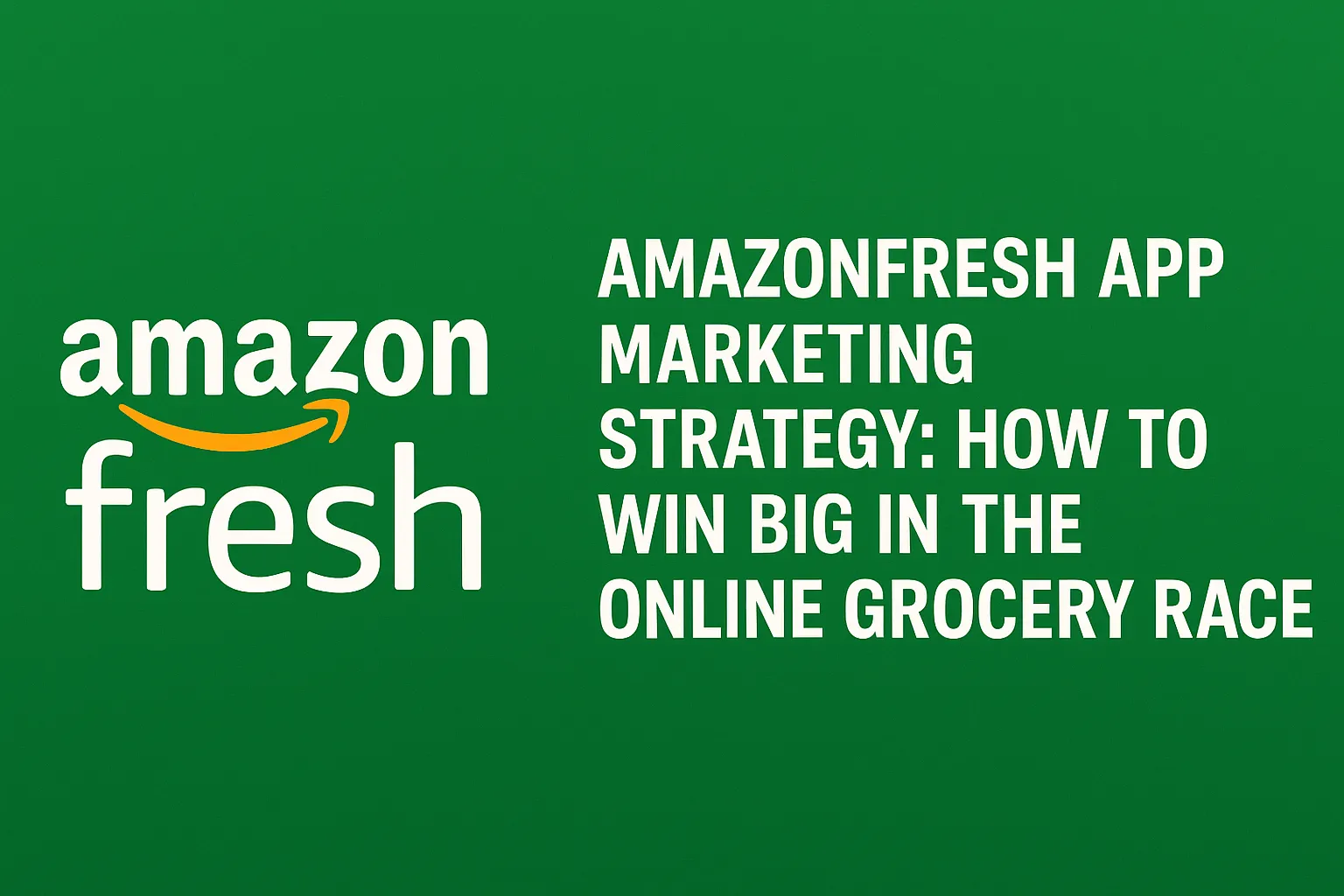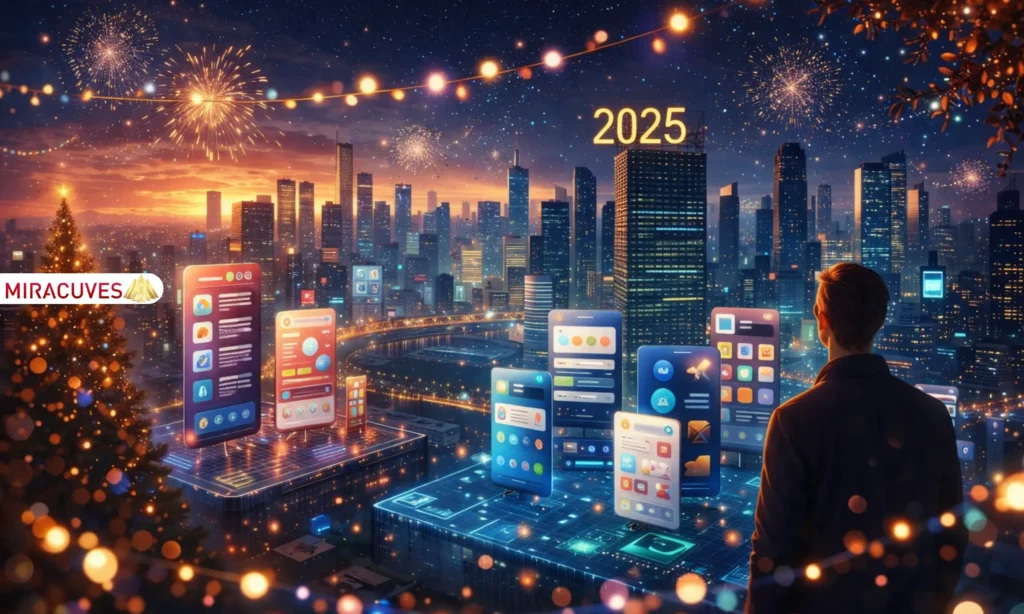Ever felt that “click and buy” thrill when you order fresh produce at 2 a.m.? Yeah, same here. Online grocery shopping isn’t just about convenience anymore—it’s a lifestyle. In a world where people are too busy (or too lazy—we won’t judge) to hit the supermarket, apps like Amazonfresh are cashing in big time. Entrepreneurs are taking notes, and clones are popping up like mushrooms after a storm. If you’re ready to jump in, partner with a top grocery delivery app development company like Miracuves to get started the right way.
But here’s the kicker: just building an Amazonfresh alternative won’t cut it. The app might be sleek, fast, and full of features—but if your marketing game is weak, your dream startup might fizzle out faster than a rotting banana in the sun. Harsh truth? Yep. Fixable? Absolutely.
Today, we’ll walk you through Amazonfresh’s marketing strategy refer Statista, what makes it tick, and how you can replicate (or improve on) it for your own app. Stick around—we’ll sprinkle in some juicy hacks and tricks along the way. And hey, if you ever need help building the app side of things, Miracuves has your back. Let’s dive in.

What Makes Amazonfresh a Marketing Powerhouse?
1. Amazon Ecosystem Advantage
Amazonfresh isn’t just a grocery delivery app. It’s part of the Amazon holonym—an ecosystem that includes Prime, Alexa, Echo devices, and even Twitch. By integrating Amazonfresh into this larger web, users are already primed (pun intended) to use it.
Key takeaway: Don’t just market your app. Build partnerships or ecosystems. Think: loyalty points with local stores, integration with smart fridges, or syncing with fitness/nutrition apps.
2. Prime-Based Hook Strategy
Amazonfresh taps into Amazon Prime to reduce customer acquisition cost (CAC). Already a Prime user? You’re halfway there. Fresh gives you exclusive discounts and faster delivery—because who wouldn’t want avocados delivered before their Zoom call ends?
Clone-friendly insight: Offer loyalty tiers, early-bird pricing, or gamified referrals. Make them feel special.
Building Your Own Amazonfresh Clone Marketing Funnel
1. Targeted Launch in Grocery-Desperate Zones
When Amazonfresh launched, it didn’t go global instantly. It carefully picked urban markets where time-starved consumers were already using food delivery services. Boom—instant user fit.
For you: Start with data-backed zones—think metros with a growing working population and fewer hypermarkets. Use Facebook Ads geo-targeting, or better, scrape public reviews to locate underserved areas.
2. Influencer-Driven Local Buzz
Amazon doesn’t rely on celebrities for Fresh. Instead, it targets local influencers and food bloggers. A review from “Ravi’s Kitchen Chronicles” might be worth more than Shah Rukh Khan in this niche.
Learn More: Build an App Like AmazonFresh – Developer Guide for Node.js & PHP
Performance Marketing That Actually Converts
1. SEM for Product-Intent Keywords
Amazonfresh dominates search ads. Type “buy fresh spinach near me,” and boom—they’re there. That’s SEM (Search Engine Marketing) at its finest.
Your strategy: Bid on local + product keywords like “organic milk in Delhi” or “best grocery app in Hyderabad.”
2. Retargeting Like a Ninja
Cart abandoners are gold—Amazon knows it. Retargeting via push notifications, emails, and even in-app nudges brings back users who almost bought.
Pro Tip: Set up automated workflows using tools like MoEngage or CleverTap. “Forget the eggs?” emails still work in 2025.
Content Strategy That Sells Subtly
1. Recipe-Based Product Bundles
Amazonfresh doesn’t just sell groceries—it sells meals. Think “Make Pasta Night Easy” with all ingredients bundled in one click.
You can do this too: Create SEO blogs like “5-Min Dinner Recipes” and link them to your in-app bundles.
2. Localized Content FTW
Seasonal fruits in Mumbai aren’t the same as those in Bangalore. Amazonfresh customizes its offerings and promotions per city.
For you: Run city-specific campaigns, discounts, and even language-based push notifications. Tamil for Chennai, Bangla for Kolkata—you get the drift.
Retention > Acquisition: Keep ‘Em Hooked
1. Subscription Models
Amazonfresh has monthly plans with added delivery benefits. Subscriptions reduce churn and increase LTV (Lifetime Value).
Clone tactic: Even without a Prime ecosystem, you can offer “Lite”, “Family” or “Saver” plans with weekly essentials delivered automatically.
2. Personalized UX
Ever notice how Amazonfresh “remembers” your last purchases? That’s data in action.
You should: Use machine learning (or even basic analytics) to auto-suggest frequently bought items, notify out-of-stock, or even recommend combos.
Social Proof & Reviews as Marketing Gold
Ratings = Trust. And Amazonfresh has tons of it. Real-time reviews, 5-star delivery ratings, and product feedback all boost conversions.
Your clone should:
- Prompt users to rate after delivery
- Offer cashback for detailed reviews
- Display top-rated items first

Conclusion
Building a grocery app like Amazonfresh is half the journey. The other half? Getting users, retaining them, and turning them into fans. From hyper-targeted launches and influencer collabs to recipe bundles and smart retargeting, it’s all about thinking like a marketer, not just a builder.
At Miracuves, we help innovators launch high-performance app clones that are fast, scalable, and monetization-ready. Ready to turn your idea into reality? Let’s build together.
FAQs
What’s the most cost-effective way to promote a new grocery app?
Start with hyperlocal influencer partnerships and geo-targeted social ads. They’re affordable and deliver fast results.
How do I reduce cart abandonment in my app?
Use retargeting flows—email reminders, in-app nudges, and discount popups. Also, streamline the checkout process.
Can I compete with giants like Amazonfresh?
Yes, if you pick the right niche, offer personalization, and market smarter—especially in under-served regions.
Should I offer discounts from day one?
Introductory offers help with onboarding, but balance it with retention tactics like subscriptions and rewards.
What tools can I use for marketing automation?
Platforms like MoEngage, WebEngage, and CleverTap offer push notifications, drip campaigns, and analytics—all in one.
How soon will I see results after launching marketing?
With the right strategy, initial traction can appear within weeks. Retention, however, requires long-term engagement.








